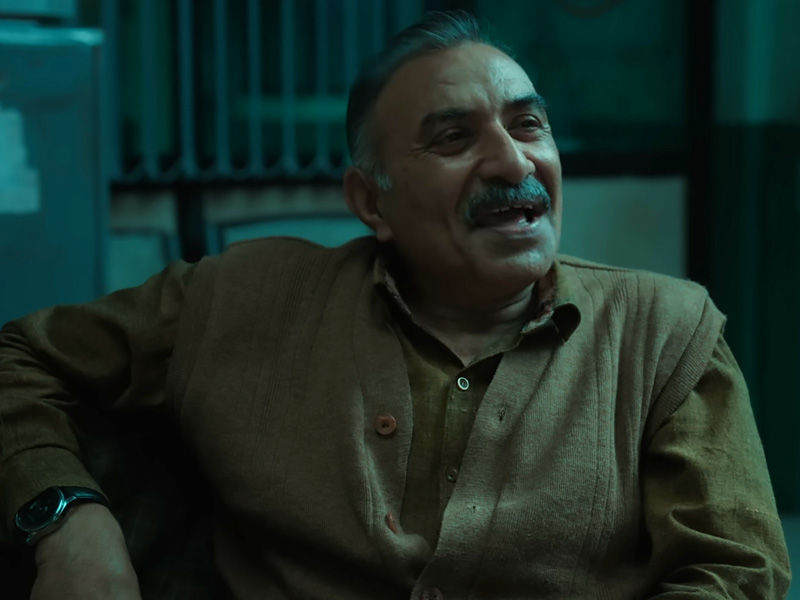The second season of Delhi Crime, the International Emmy-nominated real crime procedural, suffers from what I call the “extension problem.” This is to say, when a season with a complete arc is prolonged into another season once it becomes popular, it undermines the efficiency of the idea in the first place.
When Delhi Crime premiered on Netflix in 2019, it was plainly intended to be a one-off mini-series. Richie Mehta’s seven-episode series replicated the 2012 Delhi gangrape inquiry, with the Delhi Police playing the hero and victim but never the villain. Despite its tendency to unconditionally support the official version of events and ignore systemic flaws, Delhi Crime was an engrossing season of television.
A major part of it was due to the nature of the case it covered – 2012 gang rape, which remains a source of disagreement to this day. The case, which is still fresh in the public mind a decade later, has evolved into a symbol of crime and punishment in the United States.

It’s precisely what the second season of Delhi Crime lacks, even though it returns with a new director, writer, cinematographer, editor, and perpetrators, and why the show may not have required an extension in the first place.
For one thing, the second season struggles to find the undercurrent that defined the previous season’s storyline. The season is based on “Moon Gazer,” a chapter in former Delhi Police Commissioner Neeraj Kumar’s book Khaki Files: Inside Stories of Police Investigations, and pits DCP Vartika Chaturvedi (Shefali Shah) and her colleagues against a serial killer gang that murders and robs affluent elderly citizens in South Delhi.

According to Kumar, these atrocities were committed by members of the scheduled tribe in the 1990s, and their victims included young women. The adaptation deviates significantly from the source text, using it only as a framework and tempering it with politics and societal bias but not enough voice.
Even so, the (reconstructed) identities of the killers and the nature of the killings reveal little about the societal hierarchy and conditioning that produce criminals. The animosity is so personal that the discussion is never permitted to turn political.

Directed by Tanuj Chopra and set in 2013, the brief five-episode season follows Vartika and her squad as they strive to apprehend the perpetrators of a series of killings.
Their barbaric method of execution — bludgeoning their victims to death, wearing a vest and boxers during the killings, and leaving traces of oil at the crime site — is similar to that of the “kaccha-baniyan gang,” a serial killer group that was active in the 1990s. The fact that the group’s members were from denotified tribes, which were categorized as “born criminals” in colonial India, adds to the Delhi Police’s inquiry.

The detours that the plot (screenplay by Mayank Tewari, Shubhra Swarup, Vidit Tripathi, Ensia Mirza; dialogue by Sanyuktha Chawla Shaikh and Virat Basoya) makes in reconstructing the identities of the killers is a clever touch.
Delhi Crime equips itself to be a solid playground for social commentary by casting the criminals as a copycat gang who hide by leveraging the systemic bias against the denotified tribes. The show goes to great lengths to highlight the role of police in perpetuating the language of colonial violence inflicted on these communities even now.

In fact, that’s all Delhi Crime has to say about holding Delhi Police accountable for its excesses. The show’s viewpoint on the delicate matter of custodial abuse — which is used openly and deftly throughout the season — is hazy at best. In one scene, Vartika instructs a former SHO not to leave a mark on suspects as a manner of directing him to beat them up; in another, she chastises two officers on her team for beating up a suspect.
What we make of police violence is entirely dependent on who we choose to sympathize with – the show, for its part, sides with the police forces, viewing custodial violence as a catalyst for justice.

Nonetheless, I’d say that the season’s main flaw is that it reduces Delhi Crime to a templated version of police and criminal chase. That is to say, the five episodes appear uninterested in studying anything that comes between the cops apprehending the criminals, to the point that it misses out on delving into criminal intent.
The psyches of the offenders, as well as their relationship with crime, are themes that have been grossly overlooked this season. Perhaps this is why they don’t come across as a genuine threat to society stability – Garg and the writers have trouble connecting the dots between class, power, and gender.

It feels like a missed opportunity because, like its previous season, Delhi Crime lives up to its reputation as sleek and stylish: David Bolen’s camera is excruciatingly attentive (a crime committed in the penultimate episode is terrifying to witness), and Ceiri Torjussen’s score complements its atmospheric quality.
Also read: The Sinner: Netflix’s Amazing Binge Worthy Crime Series
Similarly, the show’s strength stems from the distinctive characters Mehta created for the show’s setting. DCP Vartika Chaturvedi and her team (Rajesh Tailang, Anurag Rao, and Rasika Dugal) provide perspectives to the show that feel both distinct and effective.

It helps that the ensemble of actors appeared to have mastered the art of minimalism — Shah headlines the play in good form, but it is Tahil and Dugal’s unexpected turns that provide the piece with emotional resonance. If a superb cast of actors can elevate a disjointed season of television, the second season of Delhi Crime is a clear frontrunner.
But I wish the filmmakers had treated Tilottoma Shome with the same respect — the actor’s cameo role is underdeveloped and half-baked, which isolates the audience from her character. In that respect, watching the show during that season is akin to eating a plate of food that is visually appealing but lacks flavor.





























